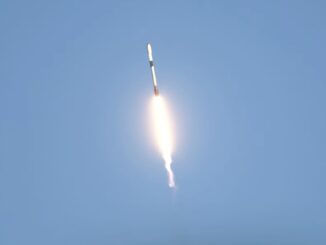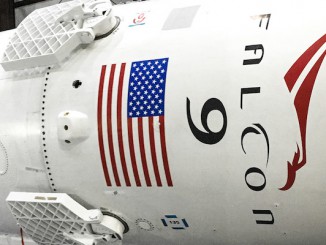A new animation of SpaceX’s Falcon Heavy rocket set for a debut flight later this year shows how the powerful launcher will blast off from Kennedy Space Center’s famed Apollo-era launch pad 39A, and could eventually fly back to Florida’s Space Coast for refurbishment and reuse.
Driven skyward by 27 kerosene-fueled booster engines, the Falcon Heavy will generate nearly 4 million pounds of thrust at liftoff, making it the most powerful operational rocket in the world. SpaceX says it can deliver up to 53 metric tons (116,845 pounds) into low Earth orbit or more than 21 metric tons (46,738 pounds) to geostationary transfer orbit, a common destination for commercial communications satellites.
The Falcon Heavy is critical to SpaceX’s goal of competing to launch a wider range of spacecraft to orbit, and still allow the company to make its rockets reusable. Many commercial communications satellites and U.S. military payloads are too hefty to launch on the Falcon 9 rocket, and the smaller booster’s performance will be further limited if it keeps reserve propellant to complete a propulsive vertical descent for recovery.
SpaceX is trying to demonstrate its daring flyback concept by aiming for rocket-assisted touchdowns of the Falcon 9’s first stage on a specially-outfitted landing ship in the Atlantic Ocean. If engineers prove the technique is safe, and FAA and U.S. Air Force regulators are comfortable, SpaceX plans to eventually switch to rocket landings at Cape Canaveral.
Construction crews are building a horizontal rocket assembly hangar a few hundred feet south of launch pad 39A on the path NASA’s massive crawler-transporters rolled Saturn 5 rockets and space shuttles to the facility for final flight preps. SpaceX is also installing a transporter-erector device similar to the hardware used by the Falcon 9 rocket.
The launch pad’s fixed and rotating service structures will remain standing, SpaceX officials said.
The first Falcon Heavy test flight is scheduled for liftoff no earlier than the third quarter of 2015.
Follow Stephen Clark on Twitter: @StephenClark1.



